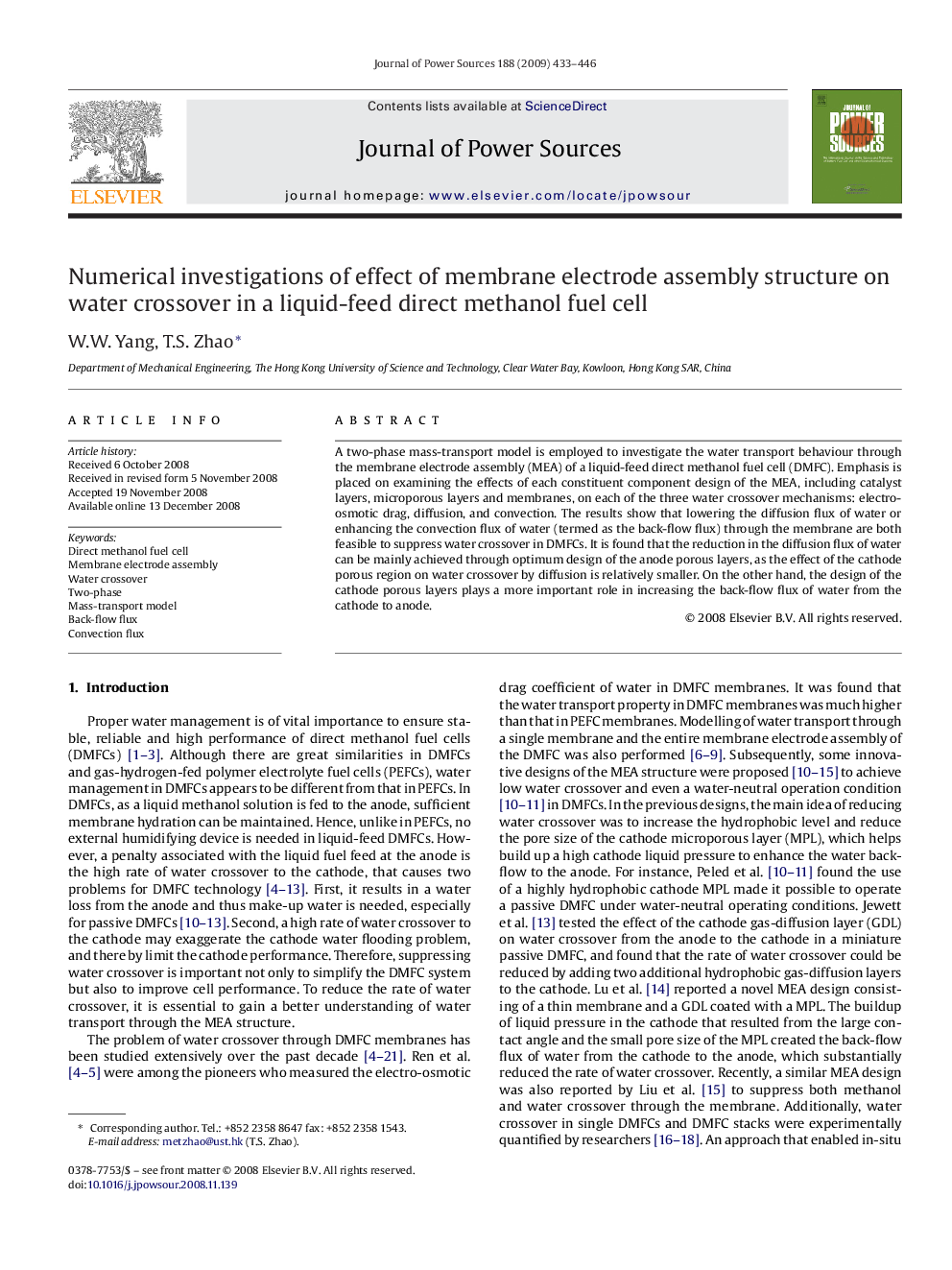| Article ID | Journal | Published Year | Pages | File Type |
|---|---|---|---|---|
| 1294241 | Journal of Power Sources | 2009 | 14 Pages |
A two-phase mass-transport model is employed to investigate the water transport behaviour through the membrane electrode assembly (MEA) of a liquid-feed direct methanol fuel cell (DMFC). Emphasis is placed on examining the effects of each constituent component design of the MEA, including catalyst layers, microporous layers and membranes, on each of the three water crossover mechanisms: electro-osmotic drag, diffusion, and convection. The results show that lowering the diffusion flux of water or enhancing the convection flux of water (termed as the back-flow flux) through the membrane are both feasible to suppress water crossover in DMFCs. It is found that the reduction in the diffusion flux of water can be mainly achieved through optimum design of the anode porous layers, as the effect of the cathode porous region on water crossover by diffusion is relatively smaller. On the other hand, the design of the cathode porous layers plays a more important role in increasing the back-flow flux of water from the cathode to anode.
